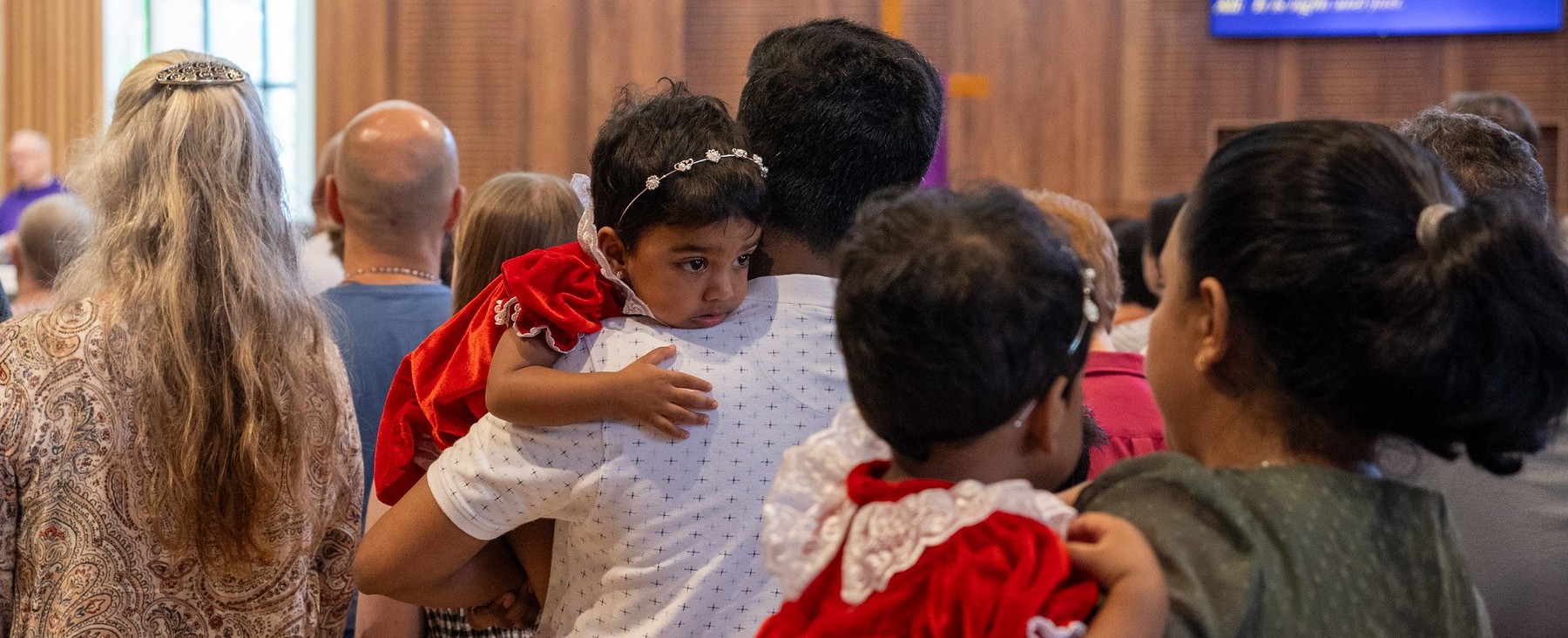Celebrating the Liturgy With Children
National Liturgical Council

Children are an integral part of the worshipping assembly. Through Baptism they are brought into the Christian community. In the Latin rite they are gradually initiated into the fullness of membership at the table of the Eucharist. The Directory for Masses with Children is one of the documents flowing from the Second Vatican Council which outlined principles for celebrating with children both in the normal Sunday assembly and at other times.
Directory for Masses with Children
The Directory for Masses with Children was prepared by the Congregation for Divine Worship and published in 1973. Its purpose is "to help children readily and joyfully to encounter Christ together in the Eucharistic celebration and to stand with him in the presence of the Father" (DMC 55). It focuses on children who have not yet entered the period of preadolescence while noting that further adaptation may be necessary for children with physical or intellectual disability.
The pastoral tone of the introduction indicates the Church's understanding of the profound effect of early religious experience on the spiritual growth of children. While children can't always understand the adult world in which they live the document acknowledges that "we may fear spiritual harm if over the years children repeatedly experience in the Church things that are barely comprehensible" (DMC 2). While the major thrust of the document pertains to the celebration of Eucharist many of its principles are applicable to all forms of prayer with children. The three chapters set out norms for adaptation of the liturgy to the needs of children.
The first chapter outlines principles for "the introduction of children to the Eucharistic celebration". It emphasises the underlying human values which precede and prepare for Christian growth, and the role of parents, teachers and the wider Christian community. It notes the need for catechesis "directed to the child's active, conscious, and authentic participation" (DMC 12). The inherent catechetical power of the liturgy can, of itself, assist in this formation. The foundational power of the Word of God requires that it should have a strong place in celebrations. This chapter concludes by stating that "the final purpose of all liturgical and Eucharistic formation must be a greater and greater conformity to the Gospel in the daily life of the children" (DMC 15).
Chapter Two treats of "Masses with adults in which children also participate", which is mostly the Sunday parish Mass. It encourages the participation of children with their families and suggests that some part of the homily or other comments be directed to them. "Sometimes, moreover, if the place itself and the nature of the community permit, it will be appropriate to celebrate the Liturgy of the Word, including a homily, with the children in a separate, but not too distant, room" (DMC 17). This is what has become known as Children's Liturgy of the Word, more properly Liturgy of the Word for Children. It is obvious from the document that this is not intended as a pseudo Sunday school or child minding. The emphasis is clearly on a parallel liturgy albeit at the level of the children. Many of the points in chapter three are relevant to the preparation and celebration of this liturgy.
The third chapter: "Masses with children in which only a few adults participate" puts forward suggested principles for adapting the liturgy for children. It encourages the participation of children in the various offices and ministries in the celebration, noting however that "external activities will be fruitless and even harmful if they do not serve the internal participation of the children" (DMC 22).
The power of liturgical action to touch the senses through the time and place of celebration, singing and music, gesture, visual elements and silence is promoted.
While the overall structure of the Mass must be maintained some adaptations are allowed "if children are truly to experience, in their own way and according to the psychological patterns of childhood, the mystery of faith … by means of rites and prayers‟ (DMC 38).
These changes must never destroy the integral nature of the celebration in such a way that children will not be able to easily move into the regular liturgical celebration. The Directory treats each main section of the Mass indicating what may be changed and the rationale in making decisions about individual rites.
The largest section, paragraphs 40–49 is devoted to the "Reading and explanation of the Word of God". It presumes that the decision to change a reading is always made after examination of the readings set down for the particular day. It allows for choice from approved translations but not for paraphrases (DMC 45). The liturgical season or specific feast should always be kept in mind. Whatever elements that will help to explain the readings should be used "so that the children may make the biblical readings their own and may come more and more to appreciate the value of God's word" (DMC 47). The Lectionary for Masses with Children with a valuable introduction is approved for use by the bishops.
This valuable little document needs to be well read and utilised by all those engaged in the formation of children.
